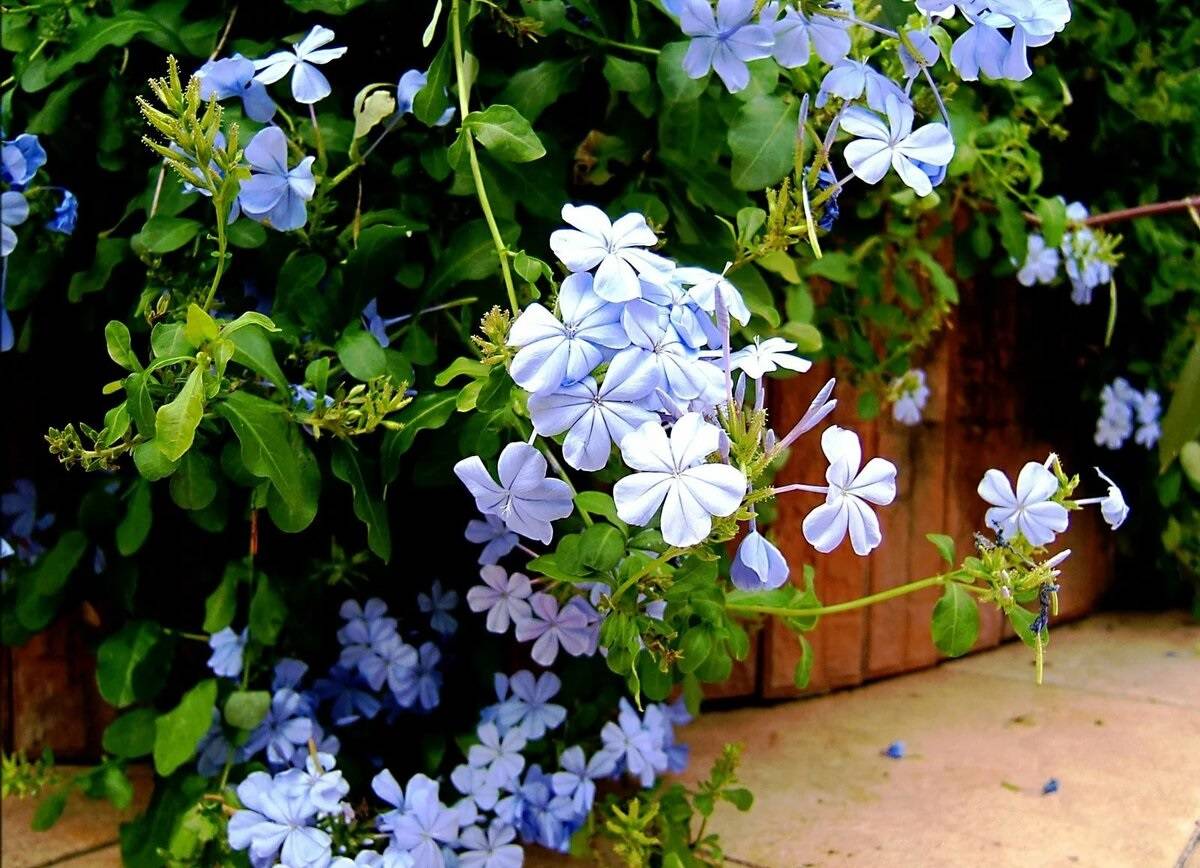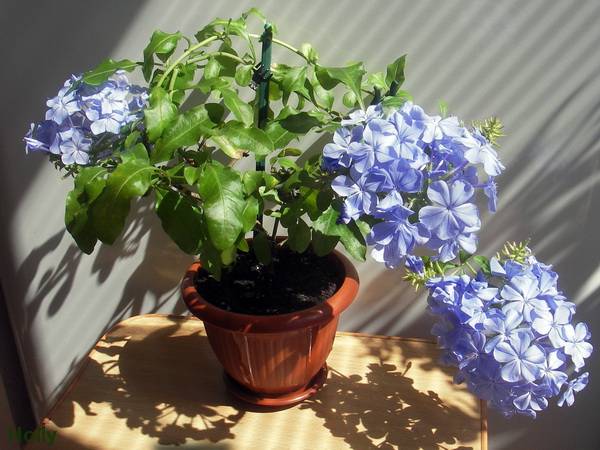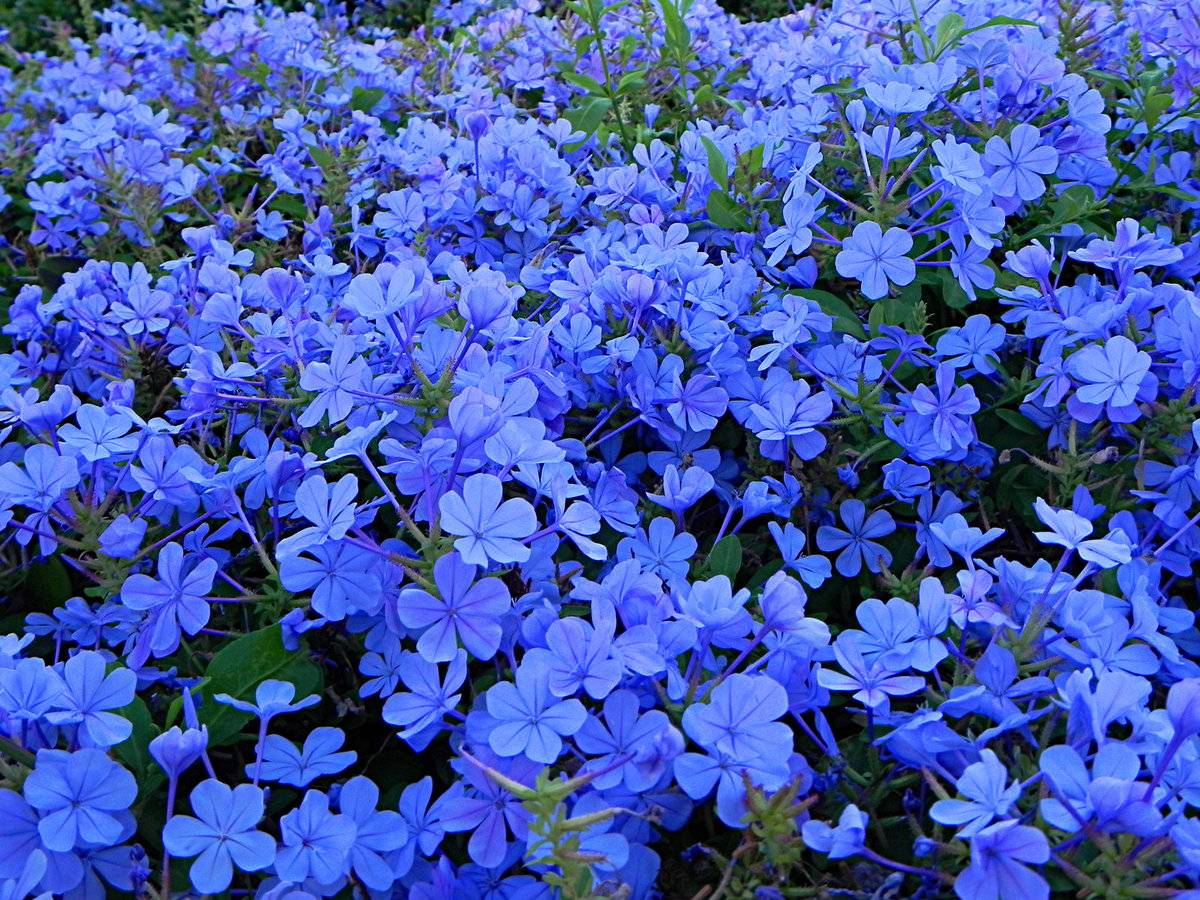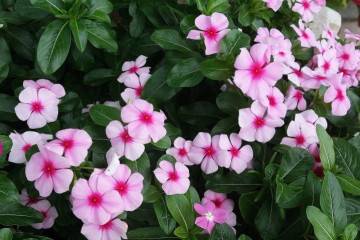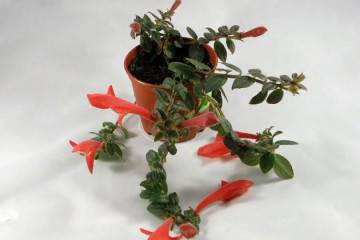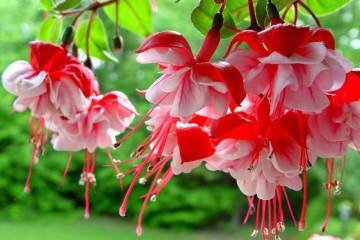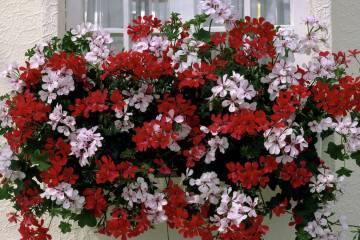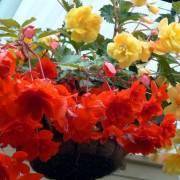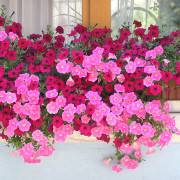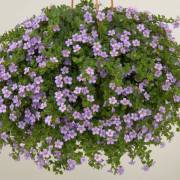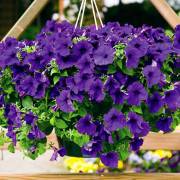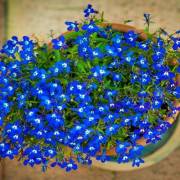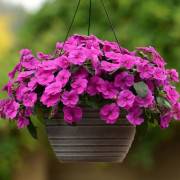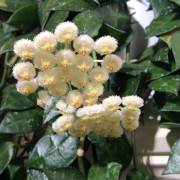Piglet blue and red (plumbago)
Content:
The blue pig is grown as an ampelous plant. It has a beautiful decorative appearance, grows like a liana and blooms magnificently. It can be grown in hanging planters and can be used to decorate balconies and terraces.
Description of lead, or plumbago
The botanical name for lead is plumbago. The plant belongs to the Pig family. Perennial evergreen lead can reach 1 m in length, but the bush still remains compact, because the plant grows in the form of a vine.
Origin story
The plumbago pig is a lush and dense plant with fine foliage. The length of the leaf blades is no more than 9 cm. The leaves are elliptical and have a bright and rich green color, they are located on short petioles.
Varieties of indoor plants with names
Indoor conditions most often grow blue and auricular pigs, but in nature there are many other interesting varieties of it.
- The blue pig is auricular. It can grow up to 5 m in length. It has very branched long shoots, on which smooth and shiny leaves 5 cm long are located. The leaf plates are light, sometimes yellowish in color. Small flowers of white and bluish shades with round petals.
- Red or pink Indian lead. The Indian variety is sometimes called the red lead. It is a branched shrub with broad, green, glossy leaf blades that have jagged edges. The pig has red flowers, collected in inflorescences-ears.
- Ceylon pig. The plant looks like an ear-shaped variety, but has snow-white flowers. It is famous for its healing properties.
Blue lead care at home
The pig is not very capricious in its care, but one should not forget about the necessary and regular measures: pruning, watering, prevention from pests, feeding.
Illumination and temperature conditions
Good lighting is necessary for abundant flowering. But on hot sunny days, it is recommended to shade the flower with something or rearrange it to a more shaded place. There is no need for additional lighting during winter as the plant is dormant and must be kept out of the sun.
During the active period, the temperature regime for keeping the flower should be in the range of 17-15 ° C. With the departure of the lead for a dormant period, the temperature is lowered to 10 ° C.
Watering rules and humidity
It is necessary to water the flower often, the main thing is not to flood it. The soil should be constantly moist and loose. During the rest period, watering is gradually reduced.
Moisture readings should be above average, about 60-70%. If the air has become drier, use special humidifiers or cope with folk methods. Additional moisture is provided by spraying with water.
Top dressing and soil quality
Plumbago needs to be fed twice a month with mineral and organic accents.It is better to choose water-soluble potash. They help bloom the buds abundantly. After the flower leaves for a dormant period, feeding is stopped, and renewed only in the spring.
Pig is a plant that requires a well-drained soil with good air permeability. The planting substrate should not only consist of earth. Moreover, the soil should be loose and moist without high levels of acidity.
Flower container size
The planting container should be wide, but not very deep. For transplanting, use pots 2-3 cm larger in diameter and depth than the previous one.
Pruning and replanting
When growing plumbago at home, it is necessary to trim the tips of new shoots. This is done to get a thicker and more lush plant and to direct all the forces towards flowering.
In the early years, the transplant is carried out annually. In subsequent ones, only the top layer of the soil is changed.
Features of flowering plants
The plant blooms for a long time and profusely and a pleasant and delicate aroma spreads from its buds.
A period of activity and rest
The period of plant activity coincides with its long flowering. Blooming of buds begins in early spring and continues until autumn. In winter, the flower leaves for a short rest, no more than two months.
Types and shape of flowers
Plumbago flowers are collected in dense umbrella inflorescences. Each has about 20 small pale blue flowers. The buds have a long tube and 5 round petals with a diameter of about 2 cm.
Flower propagation by cuttings
Pig is a flower that propagates best with cuttings. Cut off cuttings, which should not be less than 8 cm in length. It is recommended to propagate the flower in spring or summer. The lower leaves are removed from each cutting, the main thing is to leave at least 3 leaves. Cuttings are planted in the prepared substrate and covered with plastic wrap.
Growing problems, diseases and pests
Piggy rarely gets sick, but often suffers from pest attacks. Among parasites, the following are especially dangerous:
- whitefly. Small white dots on leaf plates and shoots indicate her attack. Provokes the yellowing of the bush and the fall of foliage and buds;
- mealy worm, which is located on the leaves and covers them with a brown bloom. Due to the pest, the wilting of the lead begins and the cessation of normal development;
- spider mite, which is almost invisible on the bush. It provokes yellowing and falling foliage, which also begins to crack.
In the fight against parasites, effective preparations are needed - insecticides. Whitefly is destroyed by actellik, commander, karbaphos. From folk methods, a warm shower with soapy water is often used. The same method helps to cure the mealybug from the bush. To destroy the spider mite, it is necessary to irradiate the bush with an ultraviolet lamp and treat it with phytoverm.
Pig is a beautiful ampelous plant that decorates the interior of the house. In the summer, containers with a flower can be taken out into the garden. The plant needs careful maintenance to prevent the appearance of pests or diseases.
